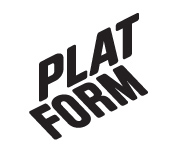Friday 25.2.2011 starting at 19.00 – at Kuntsi Museum of Modern Art

Helga Steppan
Helga Steppan is a Swedish artist who’s at the Platform residency during February and March. She’s working mainly with photographic media in combination with installation and elements of performance. One of her main interests lies in the meeting-point — or space — between the two- and three dimensional, like the way everyday objects, people and situations interact with each other. Steppan constructs environments dealing with issues of identification, storytelling, ownership and consumption. In her multi-pronged experiments in documenting and archiving, she aims to demonstrate that the process of reconstruction highlights the powers of apparently mundane objects to summon memories and evoke experiences.
More info: www.helgasteppan.com

Florian Tuercke
Florian Tuercke is a German artist, currently Artist in Residence in Nykarleby. He says:
“My main interest in my artistic work is public space. Sculpture, performance, sound- and mediaart merge together to project orientated artworks. My current long-term project is a musical research within the sound of traffic. Therefore I examined the street sounds of a number of Cities in America, Hungary, Switzerland and Germany (and soon Finland).”
More info: www.urban-audio.org, www.stadt-akustik.de, www.bassbediener.com
Free entrance. Welcome!
Comments closed











